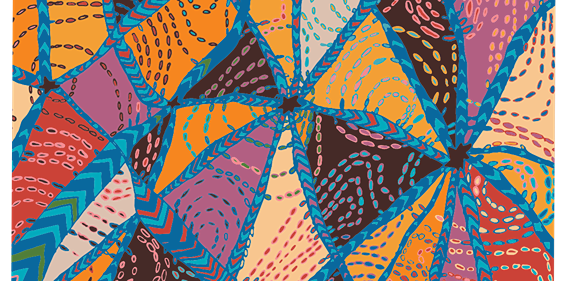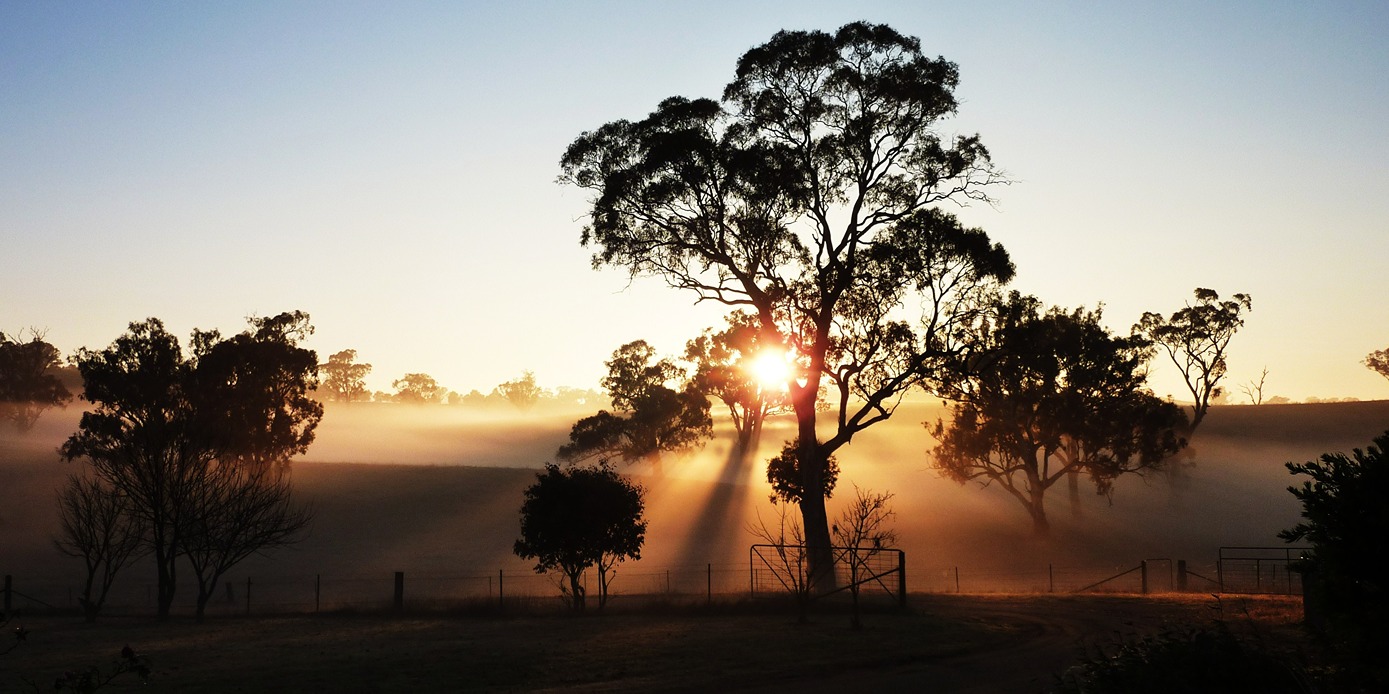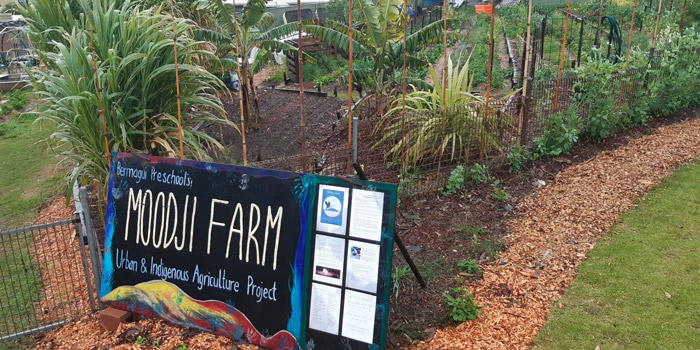Learning from Loving Country
The land across New South Wales spans a wide range of climates, from desert in the far west, to grasslands and sub-tropical areas in the north. Throughout these varied landscapes Aboriginal people have lived and adapted to the environment for more than 60,000 years.
Despite the dissemination and fragmentation of Aboriginal nations through colonisation, traditional knowledge of country and land management practices still survive today. With climate change impacting the state in a range of ways, including coastal erosion, bushfires, flooding and drought, more communities and government are looking to these traditional land and sea management practices to reduce our impacts on the environment and learn to live with change.
With the urbanisation of populations, human relationships with nature and the environment can easily shift from one of dependence to indifference. Climate change reminds us that even if we live most of our lives within the borders of an urban zone, we are still dependent on the health of the natural environment. Clean water and breathable air, the opportunity to eat fresh food and access healthy oceans and rivers are primary examples. Tourism, spiritualism and culture are also linked with a healthy environment. The Intergovernmental Panel on Climate Change’s 2022 report, Impacts, Adaptation and Viability, describes the concept of ‘human-connectedness’ - a personal connection with nature - which expounds the health benefits of interacting with the natural environment, including improved blood pressure, heart rate and mental health outcomes. In turn, those who experience human-connectedness were found to be more involved with pro-nature behaviours.
In Australia, the Federal government recognised the importance of the human-connectedness concept in their State of the Environment Report (2021), noting that the health ‘of the environment has direct implications for human wellbeing’. This is supported by a well-functioning ecosystem, one that has resources available for use. Where resources are depleted or the quality is compromised, there are impacts on the overall environment and this in turn can affect human health and the economy.
For Aboriginal Australians, ideas of human-connectedness are inextricably linked with culture.
Land ties to culture spiritually in the Dreaming, lore, songlines, sacred sites, and through ceremony, dance, art and song. Knowledge is often tied to place, animals and plants. Aboriginal people also have custodial responsibilities for the land, also known as caring for country. The Aboriginal idea of belonging to the land, rather than owning it, reflects the symbiotic relationship of a healthy land and healthy peoples. Echoing the concept of human-connectedness, the ability for Aboriginal people to practice their culture on country has proven to contribute to cultural pride and a sense of wellbeing, confidence, personal growth, sense of community, maintaining spiritual connection to the land, and improving mental health, including reducing stress and anxiety.
The importance of the land to wellbeing cannot be understated, which is why strategies to combat and manage the impacts of climate change are crucial.
Aboriginal people have been using generational knowledge of land and sea management in response to changing climates over thousands of years.
As the longest continuing culture in the world, there is a wealth of knowledge that the wider community can learn from when working with traditional owners.
Coastal Management
Coastal erosion is a climate change phenomenon associated with rising sea levels. Just north of Newcastle, the Worimi Conservation Lands have experienced dune erosion from both the sea and increased frequency and strength of southerly winds. The traditional owners, the Worimi people, in connection with NSW National Parks and Wildlife, developed a Plan of Management and use traditional knowledge and modern methods to manage the complex challenges of the Stockton Bight area.
Storm events such as rains and cyclones have become more frequent, and in 2012 an east coast low storm surge in the Worimi Conservation Lands caused major flooding and erosion when unusually high tides of over 2 metres breached the frontal dunes. Flooding events compromise the essential freshwater vegetation and increased winds lead to faster changes in dune structures.
Tourism and 4-wheel driving on the beach place additional pressure on the stability of the dunes. Management of the frontal dunes, such as through growth of vegetation like spinifex, not only helps to combat dune depletion and movement, but also assists in protecting important Aboriginal cultural sites and resources throughout the area.
Fire management
The Black Summer fires of 2019-2020 provide another example of extreme environmental events attributable to climate change. While raging wildfires are often disastrous and can lead to fatalities, fire in many areas of Australia is paradoxically necessary for the health of the environment, allowing fire-dependent species of plants to regenerate, and to ensure that larger, unplanned fires will have less of an impact.
Burning practices are interwoven with culture for Aboriginal people, with knowledge of when, where and how to burn, and the impacts of fire on the environment, all part and parcel of the cultural tradition. In the state’s south east, the Yuin people have worked with the Firesticks Alliance, practising cultural burns using cool fires. In contrast to hotter hazard reduction burning practices, cool burns are used in a measured fashion, with a low flame height, targeting specific plants. Cool burns not only reduce fuel loads but also play a role in promoting diversity of plants and the reduction of introduced and invasive plant species. Importantly, areas that have been managed through cool burns are shown to slow or even stop wildfires.
The Yuin have observed how the behaviour of wildfires in Tathra, and the aftermath of these fires, differ from areas where cultural burns had taken place. Wildfires caused greater destruction to plant life whereas areas with cool burns were quicker to recover, with both plants and wildlife returning, after being exposed to uncontrolled fire.
Indigenous rangers
Employment of Aboriginal people through ranger programs is combining traditional practices and knowledge with training in conservation to manage and protect certain areas of land and sea. At the federal level, the Indigenous Ranger Project employs Indigenous people across Australia, with 10 ranger groups across New South Wales.
New South Wales launched its own Aboriginal Ranger Program in May 2022, following the same principles of using traditional knowledge to help manage country. Under these programs, the wider community benefits from land management and engagement; the programs also provide economic benefits to Aboriginal people through career opportunities, experience, skill development and training.
The Ngulingah Nimbin Rock Rangers protect and restore an area that includes a traditional initiation ground, threatened flora and a home to the glossy black cockatoo. Their management skills have been complemented by a range of training under the program including in rural operations and nursery production. Native plant revegetation is being carried out in the area to support the local biosphere, for bush food and other traditional uses, and features in cultural demonstrations for the wider community.
The New South Wales National Parks and Wildlife Service works in collaboration with local Aboriginal groups to manage NSW national parks and reserves. Under this arrangement, government and local Aboriginal people share the responsibility of park management. Parks include Arakwal National Park, Kosciuszko National Park Tumut Brungle Gundagai Area, and Mungo National Park.
These and many other programs are currently underway in New South Wales, however as evidenced through the occurrence of extreme events and the state of the environment, there is still more that can be done to implement traditional practices and draw on the wealth of knowledge of Aboriginal people and their responses to climate change impacts, such as the Bundjalung experience of extreme flooding events in 2022.
Through embracing traditional land and sea management practices, and building respectful working relationships with traditional owners, there is the potential for adaptive practices to significantly mitigate the impact of climate change.
This article was written by Jannali Jones, a Krowathunkoolong woman of the Gunai nation.
Artwork used on this page "Caring for Country" was created by Maddison Gibbs, a proud Barkindji woman who grew up in Dubbo, NSW.
Articles
The Living Lab, located in a Lismore main street, is a design and research collaborative conceived following the floods of 2022, which wrought untold havoc on the Northern Rivers region.
Learn how Moodji Farm brings intergenerational collaboration to address climate change, support Indigenous heritage and build social resilience in Bermagui.
This collaboration between NSW DPI and the Redmap project demonstrates how marine species are responding to climate change and shows how citizen science can engage communities in conversations about climate adaptation.



